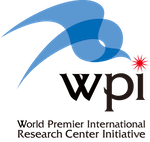Dwaipayan Chakrabarti(Univ. of Birmingham) Knotted Water
Water, despite being the most important liquid for our existence, is rather weird – apparent through
a host of anomalous thermodynamic properties that it exhibits [1,2]. The hypothesis of the presence
of a first-order liquid–liquid phase transition line in the supercooled region of the pressure–
temperature phase diagram, terminating at a liquid-liquid critical point, was introduced three
decades ago to account for the thermodynamic anomalies of water [3]. The competition for
crystallisation into ice from deeply supercooled water has posed a sever challenge to the
experimental verification of this hypothesis over the past three decades [4]. Although a growing
body of computational studies has supported this hypothesis in recent years [5,6], a clear
microscopic picture that fundamentally distinguishes the two liquid networks of different densities
has remained elusive. In this presentation, I will show that this liquid–liquid phase transition in
tetrahedral networks can be described as a transition between an unentangled, low-density liquid
(LDL) and an entangled, high-density liquid (HDL), the latter containing an ensemble of topologically
complex motifs, including links and knots [7]. We first reveal this distinction in a rationally designed
colloidal analogue of water [7], exploiting a hierarchical self-assembly strategy [8]. We show that
this colloidal water model displays the well-known water thermodynamic anomalies as well as a
liquid–liquid critical point. We then investigate water, employing two widely used molecular
models [9,10], to demonstrate that there is also a clear topological distinction between its two
supercooled liquid networks – the HDL comprising trefoil knots and theta curves in addition to links.
Our results thus unravel a topological perspective on the tale of two liquids, which should have far-
reaching implications for understanding liquid–liquid phase transitions in tetrahedral liquids [7].
References:
1. C. A. Angell, Ann. Rev. Phys. Chem. 34, 593 (1983).
2. P. G. Debenedetti, J. Phys. Condens. Matter 15, R1669 (2003).
3. P. H. Poole, F. Sciortino, U. Essmann and H. E. Stanley, Nature 360, 324 (1992).
4. K. H. Kim et al., Science 370, 978 (2020).
5. J. C. Palmer, P. H. Poole, F. Sciortino and P. G. Debenedetti, Chem. Rev. 118, 9129 (2018).
6. P. G. Debenedetti, F. Sciortino and G. H. Zerze, Science 369, 289 (2020).
7. A. Neophytou, D. Chakrabarti and F. Sciortino, Nat. Phys. 18, 1248 (2022).
8. D. Morphew, J. Shaw, C. Avins and D. Chakrabarti, ACS Nano 12, 2355 (2018).
9. J. L. F. Abascal and C. Vega, J. Chem. Phys. 123, 234505 (2005).
10. J. L. F. Abascal, E. Sanz, R. G. Fernández and C. Vega, J. Chem. Phys. 123, 234511 (2005).


